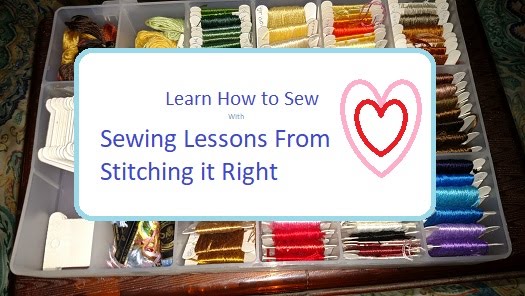Good pajamas are expensive, but they are very easy to make if you have a good pattern. If you find a deal on fabric, you can even save a lot of money by making your own pjs. With the holidays around the corner, I would like to mention they also make nice gifts.
(This review only covers the pants portion of this pattern.)
I'm pretty picky about pattern labeling. If the pattern is labeled easy, as someone with a few decades worth of sewing experience plus a fashion design program under my belt, I expect the pattern to be not only easy, I expect it to be SO easy I could do it in my sleep.
The Butterick Men's pajama pants portion of pattern number 5286, labeled easy by the way, was actually a "sort of easy" pattern to use. With three pattern pieces - front, back, and pocket - there isn't a lot that should go wrong. The pants portion actually were very easy to make, with only one actual complaint.
An Easy Pajama Pattern with One Small Problem
The problem I hit when making these pj pants, which was easy to work around as an experienced seamstress but could be a problem for new sewers, the directions for attaching the pockets and sewing them to face forward were, well, kind of unrelated to actually making these comfy pants.
If following the directions as written, the fabric's raw edges will stick out, just a little, at the top and bottom of the pocket holes.
Work-Around Tip to Make the Pattern Easier
- To amend the directions for those wanting to try this pattern, when you put the front and back panels together after sewing the pocket pieces to the panels, make sure the seams holding the pockets and panels together are flat on top of the pockets.
- Starting at the top and going down the hip area, sew slowly and feel through the fabric layers as you sew, staying just to the inside of the pocket fabric layers until you are past the pocket's raw edges at the top.
- Sew around the outer curve of the pocket as shown in the directions, then feel through the fabric layers and stay just to the inside of the layers the same way you did at the top. and bottom of the part that will form the pocket hole.
Final Thoughts on Butterick Pattern Number 5286
The pattern shows sewing the top edge of the pocket to the front panel. This is unecessary, unless you just like doing extra work, because it will be stitched in place when you sew the waistband casing.
All in all, I really like this pattern and found it pretty easy to make, other than the directions being a bit off. I would recommend it for sewers of any skill level, as long as he or she is prepared to work around the enclosed directions a bit.
 Image of blueberries courtesy of Wikimedia Commons.
Image of blueberries courtesy of Wikimedia Commons.





